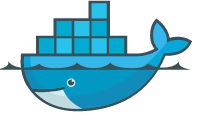Docker Tutorials
Docker is an open source application container engine, based on the Go language and open source in compliance with the Apache 2.0 protocol.
Docker allows developers to package their applications, as well as dependency packages, into a lightweight, portable container that can then be distributed to any popular Linux machine and can also be virtualized.
Containers are completely sandboxed and do not have any interface with each other (similar to iPhone app), and more importantly, containers have very low performance overhead.
Docker is divided into CE (Community Edition: Community Edition) and EE (Enterprise Edition: Enterprise Edition) since version 17.03, we can use the Community Edition.

Who is suitable to read this tutorial
This tutorial is suitable for operations engineers and back-end developers, through this tutorial you can understand the use of Docker step by step.
What you need to know before reading this tutorial
Before reading this tutorial, you need to master the common commands of Linux. You can learn the commands through Linux Command on this site.
Application Scenarios for Docker
- Automated packaging and publishing of web applications.
- Automated testing and continuous integration, release.
- Deploy and tune databases or other backend applications in a service-oriented environment.
- Build your own PaaS environment by compiling from scratch or extending an existing OpenShift or Cloud Foundry platform.
Advantages of Docker
Docker is an open platform for developing, delivering, and running applications. docker enables you to separate your applications from your infrastructure so you can deliver software quickly. With Docker, you can manage your infrastructure in the same way you manage your applications. By leveraging Docker’s approach to rapidly deliver, test, and deploy code, you can greatly reduce the latency between writing code and running it in a production environment.
1. Deliver your applications quickly and consistently
Docker simplifies the development lifecycle by allowing developers to work in a standardized environment using local containers for the applications or services you provide.
Containers are well suited for continuous integration and continuous delivery (CI / CD) workflows, consider the following sample scenarios.
- Your developers write code locally and use Docker containers to share their work with colleagues.
- They use Docker to push their applications to a test environment and perform automated or manual tests.
- When developers find bugs, they can fix them in the development environment and then redeploy them to the test environment for testing and validation.
- Once testing is complete, pushing the patch to the production environment is as simple as pushing an updated image to the production environment.
2. Responsive deployment and scaling
Docker is a container-based platform that allows highly portable workloads. docker containers can run on a developer’s local machine, on physical or virtual machines in a data center, on cloud services, or in a hybrid environment.
Docker’s portability and lightweight nature also allows you to easily accomplish dynamically managed workloads and scale up or down applications and services in real time as directed by business needs.
3. Run more workloads on the same hardware
Docker is light and fast. It provides a viable, cost-effective and efficient alternative to hypervisor-based virtual machines, so you can leverage more computing power to achieve your business goals. docker is ideal for high-density environments as well as small and medium-sized deployments, and you can do more with fewer resources.
Related Links
Docker Official Website: https://www.docker.com
Github Docker source code: https://github.com/docker/docker-ce
 ApiDemos™
ApiDemos™